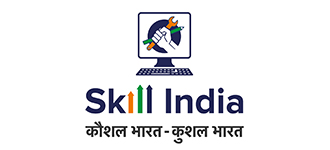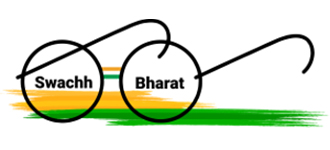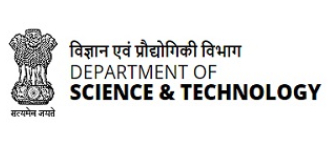| Start Date: | 2025-01-09 | Course Code: | ME 453 | L-T-P-C: | 3-0-0-3 |
|---|---|---|---|---|---|
| Course Name: | Engineering Fracture Mechanics | Semester: | 8th | Course Faculty: | Sudipta Halder |
Course Plan
DEPARTMENT OF MECHANICAL ENGINEERING
Professional Departmental Elective Course
Code: ME 453, Subject: Engineering Fracture Mechanics, Semester: VIII (Elective)
Pre-requisite: Material Science (ME 205), Manufacturing Process (ME 204), Machine Design – I (ME 302), Machine Design – II (ME 307) Mathematics I, II and III
Course Objectives
- Understanding Fracture Mechanisms:
- Stress Analysis around Cracks: The course will cover concepts like stress intensity factors (K), strain energy release rate (G), and the J-integral, which are crucial for characterizing the stress field around crack tips.
- Material Fracture Resistance: Students will learn about fracture toughness, a material property that indicates its resistance to fracture, and how to characterize it experimentally.
- Crack Propagation Criteria: The course will explore various criteria for predicting crack propagation, including linear elastic fracture mechanics (LEFM) and elastic-plastic fracture mechanics (EPFM).
- Fatigue Crack Growth: Students will gain an understanding of fatigue crack growth mechanisms and how to model and predict crack growth under cyclic loading.
- Energy Release Rate: Students will learn about the concept of energy release rate and its application in fracture mechanics.
Contact hour and types of course: 3 hours lectures/ weeks (L T P C: 3 0 0 3)
Course Assessment Policies: Class Tests / Quizzes, minor tests followed by Mid Semester and End Semester Examinations.
Topics Covered:
Unit-1 Introduction and historical review, Sources of micro and macro cracks. Stress concentration due to elliptical hole, Strength ideal materials, Griffith’s energy balance approach. Fracture mechanics approach to design. The Airy stress function. Complex stress function. Effect of size. Special cases, Elliptical cracks.
Unit-2 Plasticity effects, Irwin plastic zone correction. Dugdale approach. The shape of the plastic zone for plane stress and plane strain cases, Plastic constraint factor. The Thickness effect, determination of Stress intensity factors and plane strain fracture toughness: Introduction, estimation of stress intensity factors. Plane strain fracture toughness test, The Standard test. Size requirements. Non-linearity. Applicability.
Unit-3 The energy release rate, Criteria for crack growth. The crack resistance (R curve). Compliance, J integral, CTOD. Tearing modulus. Stability. Elastic plastic fracture mechanics: Fracture beyond general yield. Ductile and Brittle Fracture.
Unit-4 Fatigue Fracture: Paris law, life time prediction, Persistent slip band, Stress corrosion cracking. Mixed mode (combined) loading and design criteria.
Text Books:
1. Anderson T.L. Fracture Mechanics, Fundamentals and Applications. 2nd Edition, CRC Press, (1995).
2. Broek, D. Elementary Engineering Fracture Mechanics. Kluwer Academic Publishers, Dordrecht, (1986).
Reference Books:
1. Knott. Fundamentals of fracture mechanisms. Butterworths, (1973).
2. Rolfe and Barsom. Fracture and Fatigue Control in Structures, Prentice Hall, (1977).
Course Outcomes (COs):
Upon the completion of this course, the students are expected to:
1. develop basic fundamental understanding of the effects of crack like defects on the performance of aerospace, civil, and mechanical Engineering structures.
2. Select appropriate materials for engineering structures to ensure damage tolerance.
3. Employ modern numerical methods to determine critical crack sizes and fatigue crack propagation rates in engineering structures.
4. Gain an appreciation of the status of academic research in the field of fracture mechanics..
LESSON & EVALUATION PLAN
|
Subject Name- Material Science |
Branch- Mechanical Engineering |
||
|
Subject Code- ME 205 |
Semester- 3rd |
||
|
S/N |
Topic(s) |
Hours |
|
|
|
Unit-1 Introduction and historical review, Sources of micro and macro cracks. Stress concentration due to elliptical hole, Strength ideal materials, Griffith’s energy balance approach. Fracture mechanics approach to design. The Airy stress function. Complex stress function. Effect of size. Special cases, Elliptical cracks. |
9 |
|
|
|
Unit-2 Plasticity effects, Irwin plastic zone correction. Dugdale approach. The shape of the plastic zone for plane stress and plane strain cases, Plastic constraint factor. The Thickness effect, determination of Stress intensity factors and plane strain fracture toughness: Introduction, estimation of stress intensity factors. Plane strain fracture toughness test, The Standard test. Size requirements. Non-linearity. Applicability. |
9 |
|
|
|
Unit-3 The energy release rate, Criteria for crack growth. The crack resistance (R curve). Compliance, J integral, CTOD. Tearing modulus. Stability. Elastic plastic fracture mechanics: Fracture beyond general yield. Ductile and Brittle Fracture. |
8 |
|
|
|
Unit-4 Fatigue Fracture: Paris law, life time prediction, Persistent slip band, Stress corrosion cracking. Mixed mode (combined) loading and design criteria. |
8 |
|
Evaluation Scheme (EC)
|
EC No. |
Evaluation Component |
Duration |
Weightage |
Date & Time |
Nature of Component |
|
1. |
Mid Semester |
60 Min |
30% |
Refer to the Academic calendar |
Closed Book |
|
2. |
End Semester |
120 Min |
50% |
Closed Book |
|
|
3. |
Internal Assessment |
-- |
10% |
Assignment/Quiz |
|
|
4. |
Minor |
60 Min |
10% |
Closed Book |
Consultation Hours: 5PM to 6PM (Friday)
Note: All notices regarding the course will be displayed only on the Department of Mechanical Engineering notice board.
Class Notes & PPTs
- - PPT










